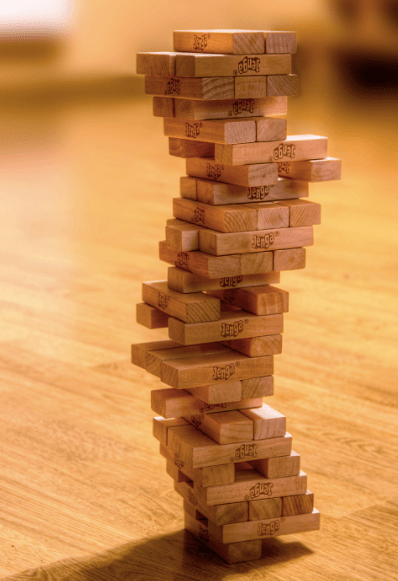BMC Part Fourteen: What If?
(If you’re using the Canvas, you’ll love my free Business Modelling eBook, full of tips for inventing and testing ideas that will change the world)
Designing new business models is exciting – conversations full of optimism and intrigue, especially when you get the gut sense that this idea is a winner.
It’s important that we don’t fall in love with our first idea.
Yes, it’s a good idea, and there are several aspects that will probably succeed.
But an idea being exciting does not mean that it has earned permanence.
It’s more likely that this idea contains the DNA of a highly successful model, but it needs to go through some refinement in order to get it out.
Michelangelo famously described his sculpting mentality:
“I saw the angel in the marble, and carved until I set it free”
Michelangelo would spend months looking for the right block of marble, visiting the best quarries in Italy until he found what he had envisaged.
He’d then travel back home with the block, a long process in those days, to begin work on his next masterpiece.
You can imagine the scene: Michelangelo standing alongside a huge white slab.
He knew what it contained, but to the outside world it was just a chunk of rock.
That’s your model right now.
First, we need to know that we’ve got the right base – in this case, the right customers in the right industry.
If this is wrong, then we’ll run into enormous difficulty further down the track, like a piece marble with a flaw running through its centre.
Once we’re happy with the base, we can start taking measurements and drawing up plans, which may vary over time as we get a closer look at how things are progressing.
Michelangelo once took over a huge piece of marble that used to belong to another artist, who had begun work and given up, having seemingly ruined the stone in the process.
It was this piece that Michelangelo turned into David, which became arguably the most famous sculpture in history.
Michelangelo saw something that others didn’t, then masterfully turned his vision into reality.
This is the mindset an innovator needs – we’re willing to do something different, and are willing to work with uncomfortable ideas.
For us to create something new, either nobody will have thought of it before, or they wrote it off as being too hard, or they tried and couldn’t make it work.
A good way of exploring these ideas is to take an existing/known idea and then change one element.
These are called Design Constraints, which are “What If?” questions that inspire creative thinking.
Here are some examples that you can apply to your own block of marble:
What if we had to offer the same value proposition to the same customer, but through a different product/service?
What if we had to offer the same product/service to a different customer segment?
What would be different about the value proposition?
What would happen if we gave our core product away for free?
Where else would we make money?
What if our service delivery had to move to an entirely digital platform?
How could we serve customers without ever meeting them in person?
What partner activities could we do better ourselves?
What headaches could we remove through outsourcing?
Which resources and activities could be palmed off?
If we wanted to massively increase prices tomorrow, what would need to change within our customer segments and service delivery?
What would a premium model look like?
What problems will our customers be concerned about in five years’ time?
You’ll be surprised by the opportunities that sit slightly to the side of your idea.
Better yet, you’ll be surprised at how a small change can open up a whole new market, and yet other drastic changes may not diminish your value proposition at all.
Monster asked: What if we partnered with Dr Dre to make headphones a fashion statement?
Louis Vuitton asked: What if we positioned RM Williams as a luxury brand?
Could we make boots look and feel high-end?
Thankyou asked: What if we took our branding approach to baby care?
What would conscious customers buy for their child?
Qantas asked: What if we started our own budget airline?
What if we gave our customers the ability to select exactly which services they wanted?
Tesla asked: What if we made a battery that eliminate peak electricity prices, even for households without solar panels?
Old Spice asked: What if we could make our product desirable to today’s young men, instead of their grandparents?
Burberry asked: What if our military trench coats could be repositioned to the public as fashionable?
World Vision asked: What if we created a fundraising activity that made young people feel the effects of poverty?
Could that empathy prompt them to raise funds?
Using these questions, let’s now create three or four alternate models.
Grab some paper or a whiteboard, and map out the new ideas.
Next we're looking at how Metrics make your model stronger...
This is a multi-part series on the Business Model Canvas.
If you’d like to jump straight to a particular section, go to:
Overview: How To Use The Business Model Canvas
Desirability: Customer Segments, Value Proposition, Customer Relationships, Channels
Feasibility: Key Resources, Key Activities, Key Partners
Viability: Cost Structure, Revenue Streams
Then once you've made your first Canvas:
Reviewing: After Your First Model, Alarm Bells
Reinventing: Testing, What If?
Improving: Metrics, The Business Model Environment
Extensions: Pitching, Social Impact, Making It Great, What Next?












